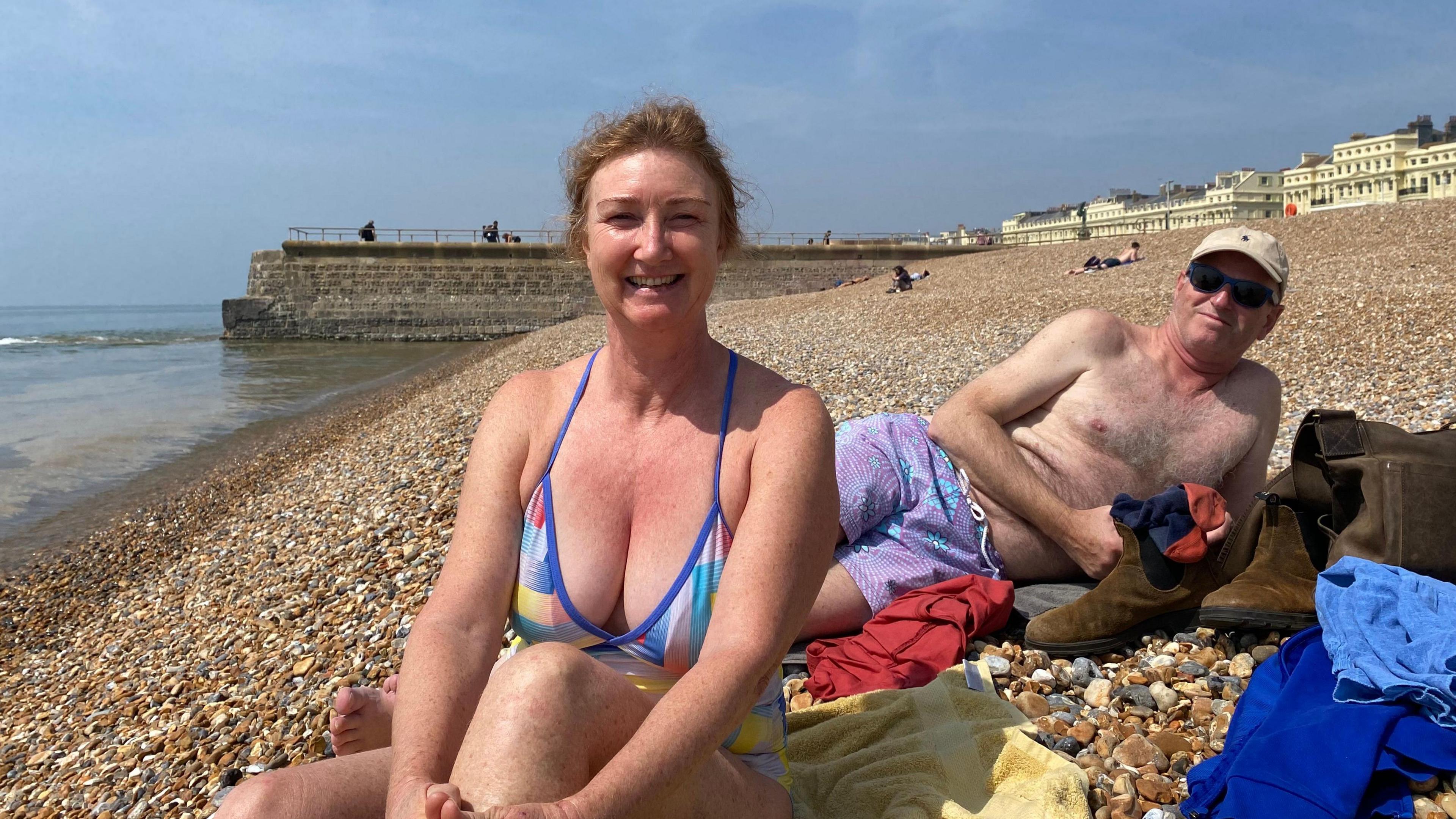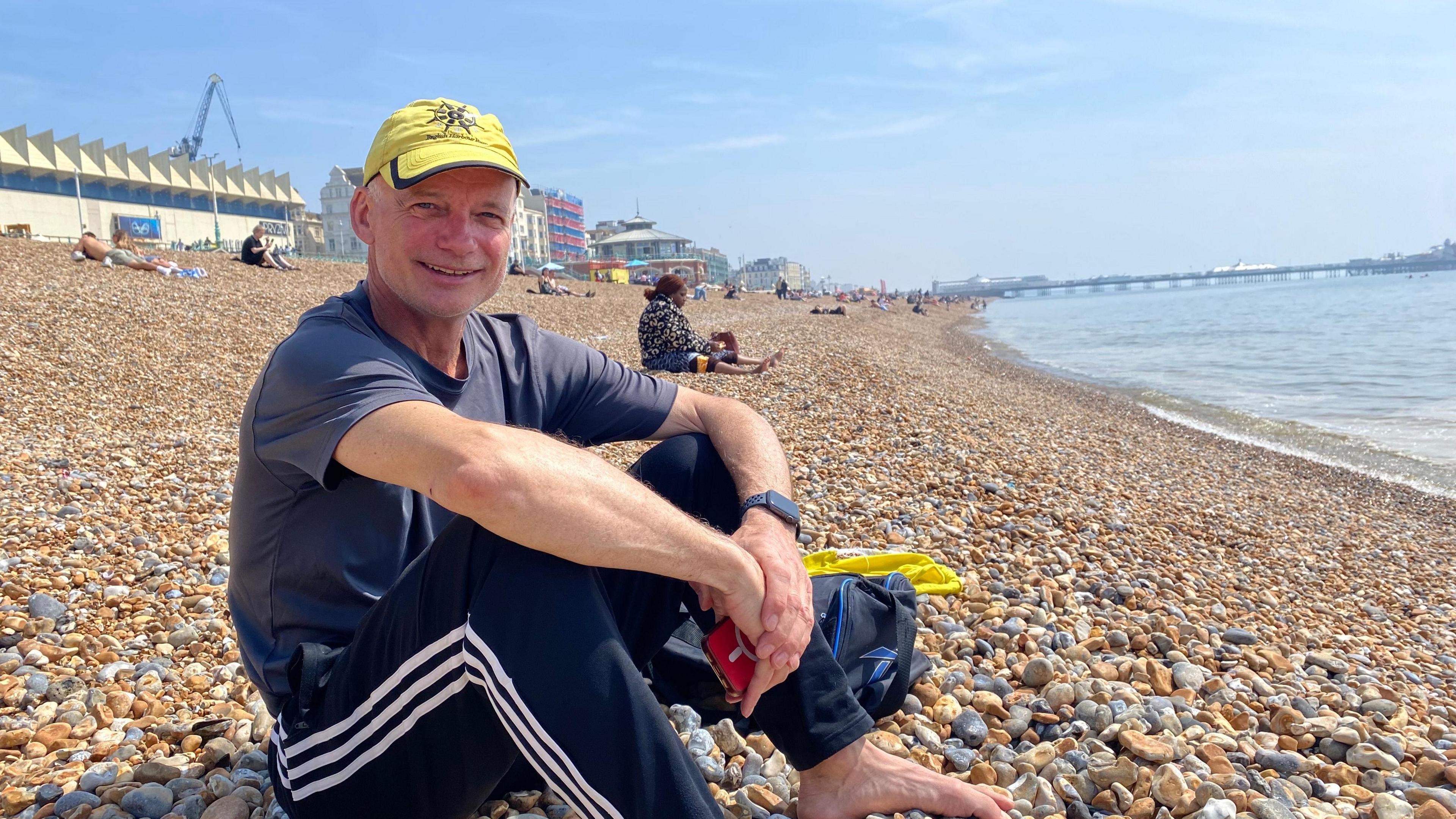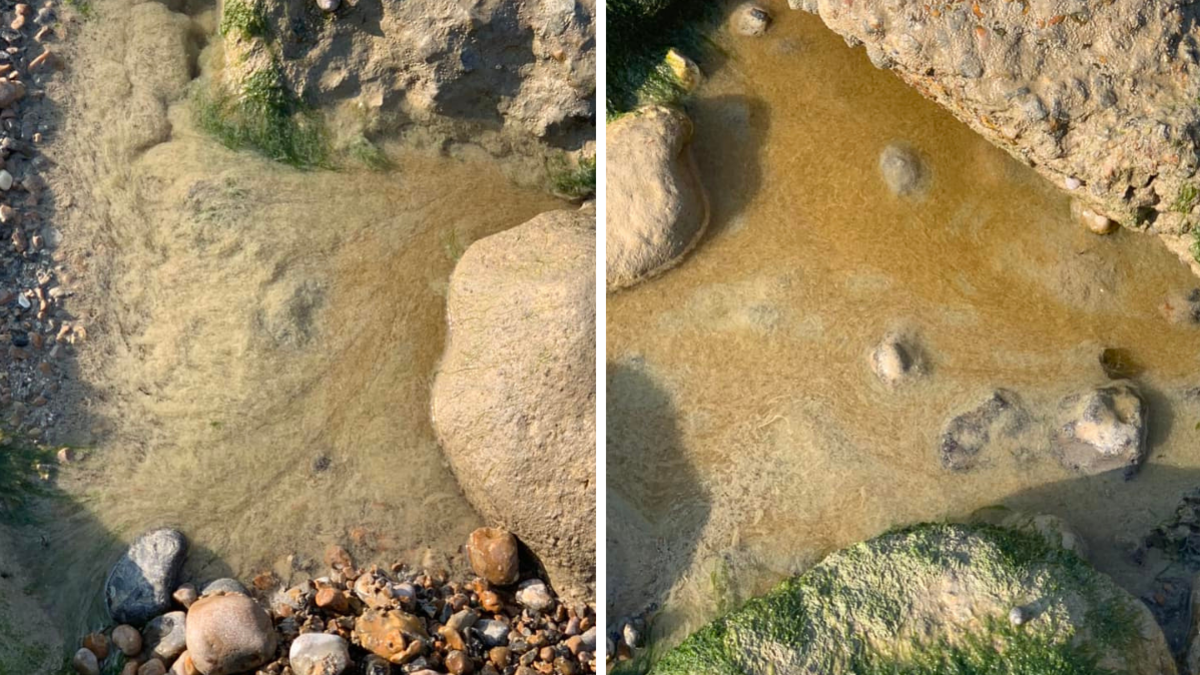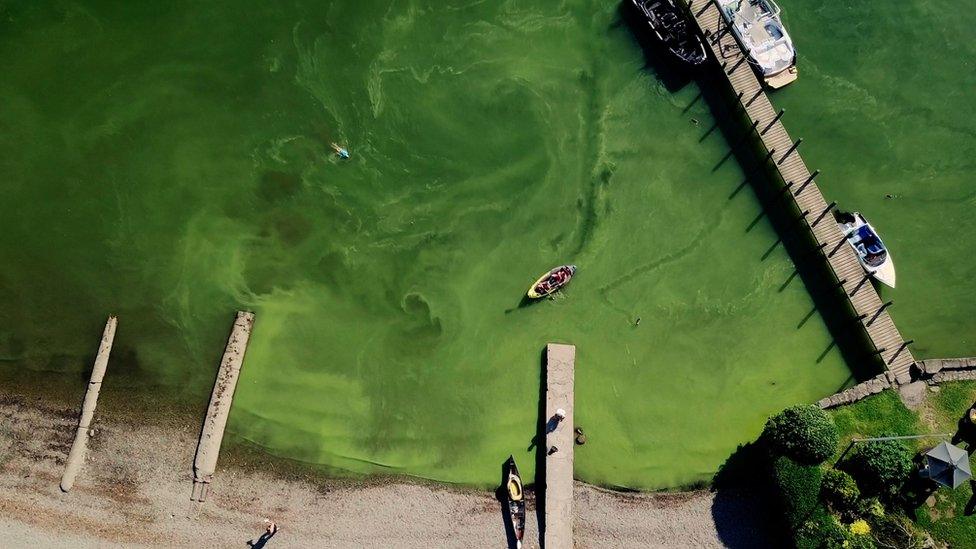Why does the sea stink of rotting vegetables?

Images of suspected algal bloom, like this one in Brighton, can often be confused for sewage
- Published
The warmer weather has brought people to the coast but some people in Brighton are worried about taking a dip.
Brown, foul-smelling sludge has been spotted on patches of water along the coastline.
It has prompted many questions, such as what is it? Is it harmful? And why does it smell so bad?
It is called algal bloom, or May Rot, and it happens when the tiny plant-like organisms living in the ocean called phytoplankton increase in numbers due to sudden warmer weather and brightness levels.
But the May Rot has not stopped everyone enjoying a dip in the sea - some people in Brighton were not bothered at all.

Louise and James Dickson, from Nairobi, enjoyed a dip in the sea while visiting their son who lives in Brighton
“I'd made the effort come down here [and] I wanted to see what the texture was like,” said Louise Dickson, from Nairobi.
“The water does feel strange, it feels thick, but I'm going to go back in there now I know it's not poo.”
Images of algal bloom are usually posted to social media around this time each year, sparking fears of poor water quality and illness.
But swimmer Adam Hall says he has “no concerns”.

Adam says he jumps in the sea after playing tennis each morning
“I try and avoid the bits that are particularly murky, but otherwise it is fine, and further out it's pretty clean,” said Adam, from Kemptown.
He said he had been in the sea every morning for the past five years and it is “generally pretty clean further out”.
Meanwhile, sea-swimming club member Luke Coster, from Hove, said it takes time to get used to the smell of the rot and compared it to that of “decomposing vegetables”.

Luke is a member of the Hove Dippers swimming club
“It is a soup. It is easy to confuse it for sewage. It is a little bit off-putting,” he said.
Sussex-based marine biologist Dr Thea Taylor said people should reconsider getting in the sea during the May Rot.
“Not all algal blooms are toxic but I wouldn't recommend going swimming in them. Make sure that hands are washed after contact and avoid pets drinking it just in case,” she said.
“The smell is caused by these tiny organisms dying which then releases gases and smells similar to decaying plant matter, which is also why they float on the surface and cause this 'scum' on the water that often collects on the shoreline.”

The Environment Agency told the BBC it believes these images taken in Rottingdean are of algal bloom
Dr Taylor said the scale of algal blooms can be exacerbated by excess nitrogen and phosphorus in the environment.
She said: “There are several causes of excess nutrients, for example from agricultural runoff or sewage overspills."
Southern Water accepted that storm overflows "very slightly increase the level of nutrients in the water column".
A spokesman for the water company said: "Studies typically show that continuous discharges, agriculture and offshore nutrient sources predominate and that nutrients from storm overflows form a very small percentage on the whole."
Brighton & Hove City Council said the algal blooms on its beaches were “harmless” and were “nothing to worry about”.
However, the Environment Agency and Southern Water said some blooms can be toxic and advised people to avoid them.
Follow BBC Sussex on Facebook, external, on X, external, and on Instagram, external. Send your story ideas to southeasttoday@bbc.co.uk, external or WhatsApp us on 08081 002250.
Related stories
- Published7 May 2024
